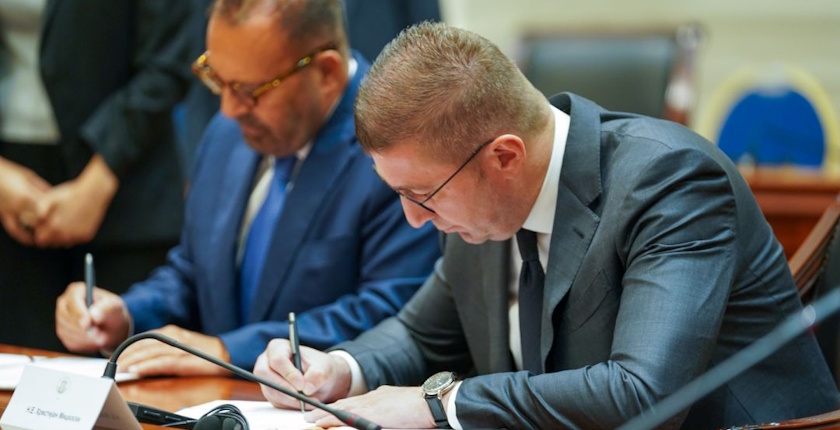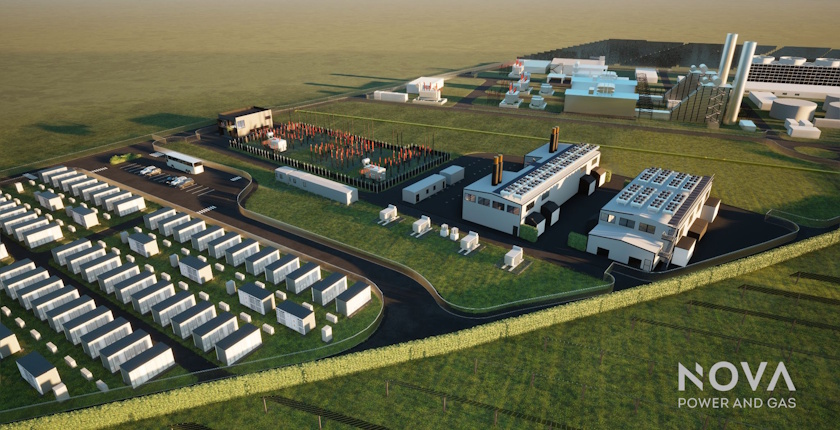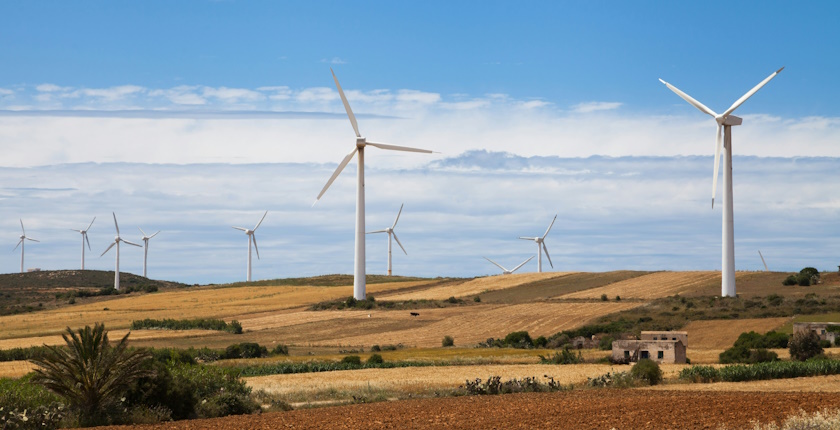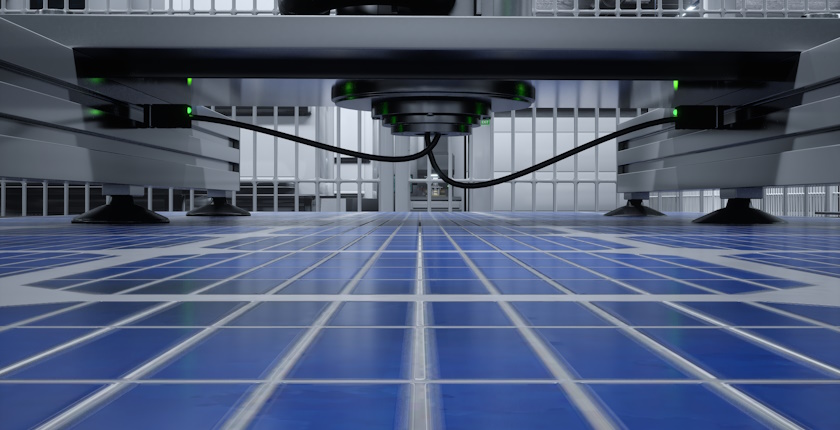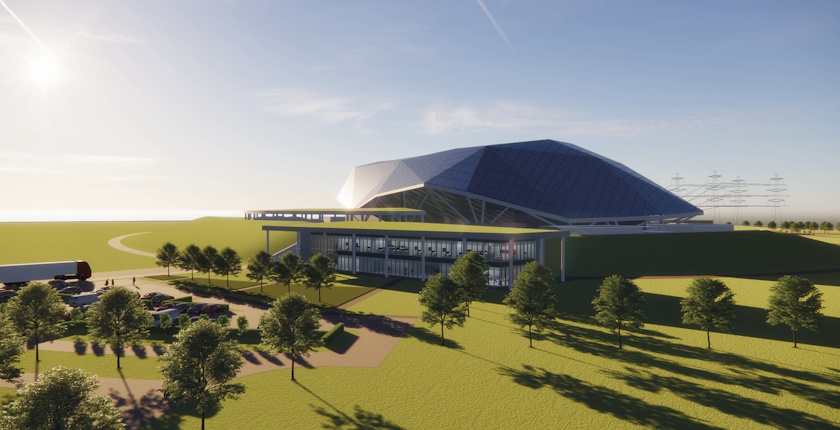
Belgrade in focus: challenges and solutions for sustainable urban development
Author: Ivan Gazdić, Attorney at Law and Partner at Petrikić & Partneri AOD in cooperation with CMS Reich-Rohrwig Hainz
For many years, Belgrade has struggled with long-standing urban, infrastructural and environmental challenges that have impeded its progress towards sustainable development in accordance with the standards of contemporary European cities. The main obstacles to Belgrade’s urban advancement include poorly regulated construction, persistent traffic congestion, high levels of air pollution and a chronic lack of green spaces. To reach the level of cities like Vienna or Paris, Belgrade should undertake systemic reforms, establish a clear development strategy, and ensure more decisive action by the city authorities.
An analysis of the current situation reveals that Belgrade holds significant potential for transformation. This ranges from preserving its cultural heritage and implementing coordinated development in the city centre to introducing sustainable mobility solutions tailored to pedestrians and cyclists. Further opportunities lie in investing in green initiatives and developing affordable housing, drawing on best practices from across Europe. Nevertheless, without a more robust city budget and stronger support from both experts and the wider public, these ambitions risk remaining little more than aspirations.
Architectural identity of Belgrade: between heritage preservation and modern development
Achieving sustainable urban development in Belgrade requires a careful balance between modern construction and the preservation of historical architecture. Areas featuring buildings from the late 19th and early 20th centuries – structures that form the bedrock of Belgrade’s cultural heritage and architectural identity – are particularly vulnerable.
Among the architectural styles of this period, academism stands out as especially prominent. Its defining features – symmetry, monumentality and richly decorated façades – have left a lasting imprint on the city’s visual and cultural character. The National Theatre and the National Museum are among the most distinguished examples of academic architecture in Belgrade, and the city’s main cultural landmarks at the Republic Square (Trg Republike), one of the city centre’s most significant urban spaces.
The new opera house could be designed to incorporate elements of academism
For these reasons, any new development in the central urban zones needs to be approached with great care and fully harmonised with the historical context.
One notable proposal in recent years is the construction of a landmark opera house on the site of the current Staklenac shopping centre at the Republic Square. Given the enduring popularity of the historicist and decorative styles among Belgrade residents, the new opera house could be designed to incorporate elements of academism.
Such an approach would not only ensure architectural coherence with the National Theatre, but would also create a direct aesthetic and cultural link to the era when the idea of building an opera house in Belgrade was first seriously considered.
However, it is important to emphasise that preserving Belgrade’s identity does not mean relying solely on historical architectural styles. Contemporary Serbian architecture is equally important for maintaining the authenticity of the city’s urban fabric and adapting it to modern needs.
To fully harness this potential, the city should continuously promote local architects through regular public competitions, professional exhibitions, and the implementation of the most successful proposals – following the model of established European architectural practices. Initiatives such as BINA and mandatory architectural competitions create opportunities for innovation and give young architects in Belgrade a chance to shape the city’s contemporary architectural identity.
One of the most notable examples of successful public architectural competitions in Serbia was the international competition held in 2021 for the new Belgrade Philharmonic building at Ušće, organised by the United Nations Development Programme (UNDP) and the Government of Serbia.
The winning proposal, by London-based Amanda Levete Architects (AL_A), envisioned a concert hall without a defined front or back façade, allowing for seamless integration with the landscape of Ušće Park and the Danube River. Architect Amanda Levete described the project as “an expression of harmony between nature, architecture and music”, emphasising the need to “bring nature back into our cities to make them greener and more beautiful places”.
In line with this vision, the design features a green roof and landscaping with native tree species. The new Philharmonic building thus stands as an example of sustainable and contemporary architecture in Belgrade. However, despite receiving positive evaluations from the professional community, the project has been delayed due to uncertain funding and administrative hurdles relating to the building permit.
Unfortunately, the opportunity to showcase contemporary domestic architecture through the Belgrade Waterfront project appears to have been missed. The project has frequently been criticised for its lack of alignment with the urban and cultural context of Belgrade. According to many architects, it prioritises spectacle and commercial appeal over authenticity, failing to reflect the spirit of Belgrade’s urban culture.
It draws neither from the architectural language of Belgrade academism nor from the legacy of socialist modernism in New Belgrade, instead adopting the global International Style – a contemporary architectural trend that heavily favours glass and steel, with little regard for local or historical references.
Given the growing disconnect between new construction and the historical character of central Belgrade, establishing a professional body to oversee architectural standards in the inner city seems increasingly necessary. Composed of architects and art historians, such a body would be empowered to review new projects and reject or condition those that are not appropriate for the historic urban core of the capital.
Terazije as the Times Square of Belgrade
Walking through Terazije in Belgrade, it’s hard not to notice the Albania Palace – a building that has stood as a symbol of modern architecture in the capital for decades. Interestingly, before the Second World War, there was a plan to build Mitić’s Palace, intended for a different location but never realised. However, when we look at the architectural drawings of Mitić’s Palace, the resemblance to Albania Palace is striking, allowing us to imagine what Albania might have looked like had it been built with a few additional floors.
In her text on the history of the building, Milica Ceranić notes that architect Ivan Zdravković once remarked that the Albania Palace appeared somewhat unbalanced – as if something were missing from the top. The idea of upgrading the building was considered in the late 1980s, when architect Branko Bon proposed adding several floors to make the structure “more graceful and less squat”.
With careful planning and respect for heritage preservation guidelines, such an upgrade could one day restore the building’s lost prominence, which was diminished by the construction of taller surrounding buildings in the second half of the 20th century. It could also help reshape the modern image of Terazije as a lively urban square in Belgrade – echoing the energy of major public squares around the world.
Why Belgrade isn’t a city for cyclists – and why it needs to become one
Traffic and mobility remain among key unresolved urban issues in Belgrade. The lack of a developed cycling infrastructure, combined with an overburdened public transportation system, is recognised as one of the main factors contributing to traffic congestion and increased air pollution. Introducing safe, physically separated bike lanes in the capital would not only improve road safety but also encourage broader use of bicycles as a means of transport.
Following the construction of a network of physically separated bike lanes in Seville, the number of bike trips rose by more than 400%, while the risk of traffic accidents per trip dropped by around 60%. In Belgrade, where cyclists often ride on pavements due to the lack of space on the roads, the need for the planned development of safe and separate bike infrastructure is becoming increasingly clear.
In central Belgrade, heavy traffic congestion is often caused by vehicles parked on pavements and a chronic shortage of garages, while pedestrian zones are limited to just a few streets – such as Knez Mihailova, Obilićev Venac and Topličin Venac.
Experts have long emphasised the need to expand pedestrian zones in Belgrade, which is standard practice in well-organised European cities. Instead of serving as a pedestrian zone and an attractive tourist destination, Kosančićev Venac, the oldest preserved historical area in Belgrade, has been left to traffic chaos and is clogged with parked cars every day.
Prioritising infrastructure that supports sustainable mobility is no longer just a matter of urban planning – it is a question of public health and the city’s long-term resilience
Recently, Paris held a referendum approving the gradual closure of 500 additional streets to traffic and a 10% reduction in parking, significantly decreasing the number of cars in the city centre. At the same time, the Paris city administration is investing in the creation of new parks and the expansion of green areas in urban neighbourhoods, accompanied by a strong public push for streets to be shared more fairly and adapted to the needs of pedestrians and cyclists.
In addition to enhancing safety and accessibility for pedestrians and cyclists, investing in new infrastructure plays a vital role in protecting the environment. Encouraging alternative modes of transport, such as cycling and walking, helps reduce car dependency, leading to lower emissions of harmful pollutants that significantly degrade air quality in Belgrade.
Cities like Copenhagen and Amsterdam, which have consistently invested in pedestrian-friendly and cycling infrastructure, report noticeably lower pollution levels and a higher quality of life for their residents. With air pollution episodes becoming increasingly frequent in Belgrade, prioritising infrastructure that supports sustainable mobility is no longer just a matter of urban planning – it is a question of public health and the city’s long-term resilience.
Energy efficiency and urban sustainability in Belgrade
- nZEB and ZEB standards: EU regulations and Serbia’s position
Energy efficiency is a cornerstone of the European Union’s climate and energy policy. Under the revised Energy Performance of Buildings Directive (EPBD), all new buildings in the EU must meet near-zero energy building (nZEB) standards, while existing buildings are to be systematically renovated to reduce both energy consumption and greenhouse gas emissions.
The Fit for 55 package has raised the bar even higher: by 2030, the EU aims to reduce overall greenhouse gas emissions by at least 55% compared to 1990 levels, with the building sector expected to play a key role in achieving this target.
nZEB standards are still not clearly defined at the national level
The most recent revision of the EPBD stipulates that, beginning on 1 January 2028, all newly constructed public buildings must comply with the Zero‑Emission Building (ZEB) standard. Starting on 1 January 2030, this requirement extends to all new buildings – both residential and non‑residential. ZEBs must feature extremely high energy performance, produce zero on-site carbon emissions from fossil fuels, and ensure that any remaining energy demand is met exclusively through renewable energy sources (on-site, nearby, or via district systems).
As a contracting party to the Energy Community and a candidate for EU membership, Serbia is required to gradually align its national legislation with EU regulations. However, nZEB standards are still not clearly defined at the national level, and to date, no public building in Serbia has been constructed according to these criteria.
- National project for nearly zero-energy buildings: Belgrade among participating cities
The Nearly Zero-Energy Buildings in Serbia project, launched at the end of 2023, has a total budget of EUR 77.68 million – EUR 50 million in concessional loans from KfW and EUR 27.68 million in grants provided by the EU, the German government, REEP and IPA funds. The project consists of three components: the energy rehabilitation of approximately 35 public buildings, the installation of solar panels on around 125 buildings, and the pilot construction of one or two buildings in line with the nZEB standard.
Implementation is scheduled to continue until February 2026, with expected energy savings of at least 40% and an overall annual reduction in CO₂ emissions of around 11,750 tonnes (6,900 tonnes through building rehabilitation and 4,850 tonnes through solar panel installation). So far, teams and working groups have been established to identify the buildings to be included, while public calls and the start of construction work are expected in 2025. The locations and building types planned under the nZEB pilot component have not yet been disclosed, indicating that this part of the project is still in the preparatory phase.
- International support for energy efficiency: 30 public buildings in Belgrade undergoing renovation
In 2024, two major energy renovation projects for public buildings were launched in Belgrade, with a combined value exceeding EUR 50 million.
The first project involves the rehabilitation of 26 state-owned buildings – including the Palace of Serbia and the Institute for the Improvement of Education – with support from the Council of Europe Development Bank (CEB) and UNDP. Completion is planned for 2027. The upgrades include window and door replacement, thermal insulation, LED lighting and other energy efficiency measures, along with the integration of renewable energy sources. These improvements are expected to reduce energy consumption by 36–50%, lower CO₂ emissions by around 45%, and generate average annual savings of EUR 10,000 per facility.
At the same time, the project “EU and EBRD for Energy Efficiency in Belgrade” is underway, targeting four municipal institutions: the Belgrade City Library, the Student Polyclinic, the Student Hospital, and the Institute for Emergency Medical Assistance. The EU has allocated EUR 11 million in grants, while the EBRD has provided an additional EUR 5 million in loans. Similar renovation measures are expected to deliver energy savings of 46–86% and reduce CO₂ emissions by 41–74%. The tender was announced in May 2023, and construction began in May 2024, with completion expected by 2026.
- Belgrade without a fund, but relying on temporary solutions for residential building renovation
More than 85% of existing residential buildings in Serbia remain energy inefficient. The previously announced city fund for improving energy efficiency – intended to support window and door replacement, façade insulation and heating system upgrades – never came to fruition in its intended form. Instead, the City of Belgrade adopted an alternative model: periodic public calls for awarding subsidies for construction or renovation works, or loans for housing associations.
However, a fund based on the revolving principle would offer a more sustainable solution to the long-term challenge of deteriorating buildings. Initially financed through the city budget and donor contributions and later replenished via user repayments through public utility company Infostan (the City of Belgrade’s consolidated billing and collection of utility services), such a model would enable continuous reinvestment in new projects. This would create a stable, transparent and self-sustaining financing system, with a significantly lower risk of misuse compared to current subsidy schemes and individual loan arrangements.
The Fund for the Improvement of Energy Efficiency in Serbia exists within the legal and strategic framework, but it has yet to be fully institutionalised
At the national level, the Fund for the Improvement of Energy Efficiency in Serbia exists within the legal and strategic framework, but it has yet to be fully institutionalised or to function as an independent operational body.
Currently, funding for energy efficiency is provided through alternative mechanisms – such as public calls from the Ministry of Mining and Energy, local co-financing programmes and international projects. Still, it is expected that the fund will be formally established in the coming years and begin operating at full capacity, aligned with European standards and the goals of sustainable development.
The untapped potential of Belgrade’s rivers: still no wastewater treatment plants
Revitalising the rivers and opening access to the banks of the Sava and the Danube for recreational use would significantly enhance quality of life and boost Belgrade’s tourism appeal. Many European cities have transformed previously neglected riverbanks into vibrant public spaces – a notable example being Madrid’s Madrid Río, a ten-kilometre green oasis created by burying the highway along the Manzanares River and adding walking paths, sports fields, playgrounds and even sandy beaches.
In July 2025, Paris broke a century‑long precedent by officially reopening the Seine to swimming for the first time since 1923, following a EUR 1.4 billion cleanup ahead of the 2024 Olympic Games.
Meanwhile, Zagreb, Budapest and Prague have already built or modernised large facilities for municipal wastewater treatment, yet Belgrade still has over one hundred direct discharges flowing freely into the Sava and the Danube – without any purification. Estimates show that a complete system of sewage collectors and the construction of five wastewater treatment plants would require at least EUR 1 billion to EUR 1.5 billion.
The government signed commercial contracts worth EUR 3.2 billion with Chinese company CRBC
Although the construction of the main wastewater treatment plant in Veliko Selo is included in the national Clean Serbia programme, the method of financing and the exact scope of work have yet to be clearly defined.
Official sources confirm that EU grants were also considered for projects such as the Belgrade wastewater treatment plant (which Serbia uses, but which, according to available reports and assessments by relevant institutions, are insufficient for investments of this scale). Instead, at the end of 2021, the government signed commercial contracts worth EUR 3.2 billion with Chinese company CRBC (financed through a Chinese loan) for the Clean Serbia programme, aimed at building a sewage network and wastewater treatment plants in 65 municipalities at 73 locations across the country, including parts of Belgrade.
Shortage of green spaces: Belgrade falls short of WHO recommendations
According to the World Health Organization (WHO), Belgrade does not have enough green space per capita. This underscores the urgent need for systematic approach to urban planning that focuses on expanding parks and green areas, as well as ensuring more regular and higher-quality maintenance of existing greenery. Rather than relying on an ad hoc approach, the city needs a long-term strategy to increase green space per resident and enhance the overall quality of urban life.
Belgrade is experiencing a declining trend in green space per capita – citywide estimates range between 14 and 20 m² per person, while in central municipalities such as Vračar, that figure drops to just 2 to 3 m². This is significantly below the WHO’s recommended minimum of 9 m² per person, and even further from its ideal benchmark of 50 m² per person.
The forgotten plans of Mali Kalemegdan
As early as the late 19th century, urban planners envisioned transforming the Belgrade Fortress into a structured city park filled with attractions. The first public competition for the design of the Kalemegdan park was held in 1898, and the winning proposal by architect Dimitrije T. Leko included the addition of artificial water features in Mali Kalemegdan (the lower section of the park). Leko’s design featured a small lake – referred to as “the pond” – and a stream with a waterfall located near children’s playgrounds.
This made the park a major attraction in the early decades of the 20th century. At the time, the city even installed a dedicated water supply system, drawing water from the Sava River for irrigation and to fill the ponds. These water features, however, disappeared in 1936 with the construction of the Belgrade Zoo.
Reportedly, on the occasion of the 120th anniversary of the first Kalemegdan park plan, some admirers of Belgrade’s historical heritage proposed restoring the stream, waterfall and pond as a tourist attraction. However, the outcome of this initiative remains uncertain.
Most residents of Belgrade seem to agree that Kalemegdan should be cleared of all unnecessary and improvised structures that undermine its cultural and historical character – such as souvenir stalls, temporary kiosks and ad hoc café terraces – that have proliferated over time across the fortress plateaus. Removing these makeshift structures would allow for a more authentic and unobstructed experience of this nationally significant cultural landmark.
Housing and social policy
Unlike Vienna – where as many as 62% of residents live in subsidised apartments with below-market rents – Belgrade has virtually no meaningful stock of municipal housing. Rental and housing prices in the city have reached levels that are disproportionate to local incomes. Experts note that the construction of socially affordable housing would significantly alleviate the housing crisis, particularly among young people and students. While Vienna invests approximately EUR 600 million annually in the construction of new apartments, thereby helping to stabilise the housing market over the long term, Belgrade allocates only symbolic amounts to such initiatives.
In this context, the public-private partnership (PPP) model could offer an effective solution for building student dormitories and addressing the chronic shortage of student accommodation. One successful example comes from Nikšić, Montenegro, where a student residence was built through a PPP contract. Similar projects are now being explored throughout the Western Balkans.
Budget and financial challenges
The City of Belgrade’s budget for 2025 is approximately EUR 1.6 billion. With an estimated 1.68 million residents within the city’s administrative territory, this translates to around EUR 950 per capita annually. By comparison, Vienna planned a budget of approximately EUR 19.8 billion for the same period; with around 2.03 million residents, this equates to roughly EUR 9,800 per person. Paris adopted a budget of EUR 11.3 billion for 2025, which corresponds to approximately EUR 5,500 per capita, based on a population of about 2.05 million.
In Serbia, local self-governments receive a portion of the personal income tax (PIT) – primarily the salary tax – based on citizens’ registered place of residence. According to the Law on Financing Local Self-Government, since 2016, 77% of salary tax revenues are allocated to cities, while Belgrade receives a reduced share of 66%. These percentages were higher in the past. This means that Belgrade currently retains 66% of the salary tax revenue generated within its territory. Other components of PIT (such as those from self-employment or agriculture) are allocated entirely to local budgets.
It appears that reforms to public finance and fiscal policy should be considered
In contrast, Serbia’s value added tax (VAT) revenue is retained in full by the central government. Local governments do not receive a direct share of VAT; instead, funds are allocated through general, non-earmarked transfers. As a result, Belgrade cannot rely on a stable inflow of VAT revenue – unlike cities in countries such as Austria, where a portion of VAT is allocated directly to local governments and constitutes a significant part of their budgets.
Given these structural limitations and compared with the budgetary capacities of other major European cities, it appears that reforms to public finance and fiscal policy should be considered. Without such changes, Belgrade will continue to face significant constraints in funding strategically important projects – including those essential to the city’s transition towards a greener and more sustainable future.
Is Belgrade ready to catch up with Europe in sustainable development?
Belgrade’s development in the spirit of modern European cities is achievable only through long-term planning, a clear vision and well-defined priorities – not through short-term decisions or frequent shifts in direction. A more functional urban future requires a larger city budget, more efficient use of public funds, and the coordinated implementation of urban planning initiatives.
At the same time, Belgrade should invest in the revitalization of historic urban cores, the expansion of pedestrian zones, the development of cycling infrastructure, the construction of wastewater treatment plants, and the gradual adoption of the “Viennese model” of social housing. Achieving this vision will demand strong political will, strategic governance, and the active engagement of both experts and citizens.
The experiences of cities such as Vienna and Paris demonstrate that, while such development may require significant public investment, it yields numerous long-term benefits.
Ultimately, Belgrade’s trajectory will depend on both the decisions of city leaders and the engagement of its citizens. From the authorities, responsibility is expected; from the public, initiative and participation. Time is not an ally – every decision made today shapes the Belgrade we will live in tomorrow.

